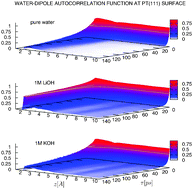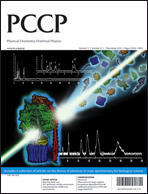Ion-size effect within the aqueous solution interface at the Pt(111) surface: molecular dynamics studies
Abstract
All-atom classical force-field based molecular dynamics simulations have been employed to investigate the structure and dynamics of interfacial


 Please wait while we load your content...
Please wait while we load your content...